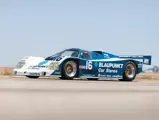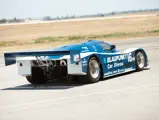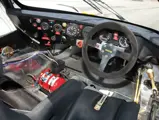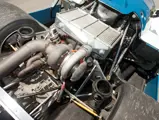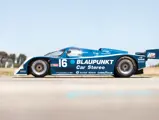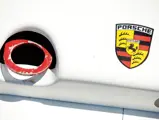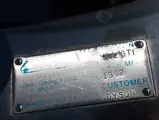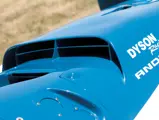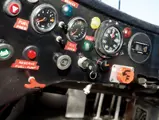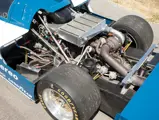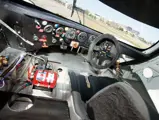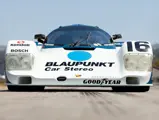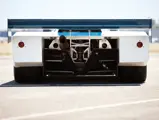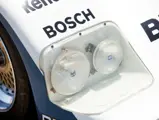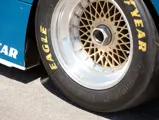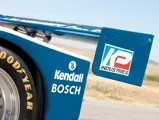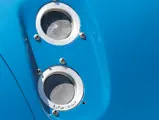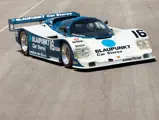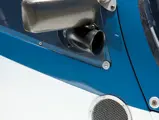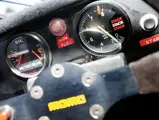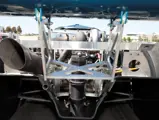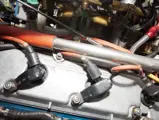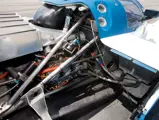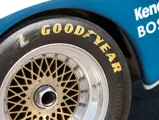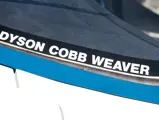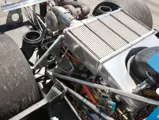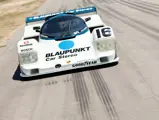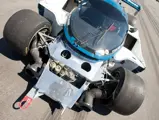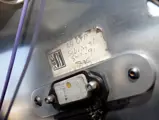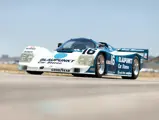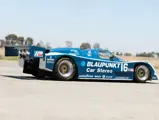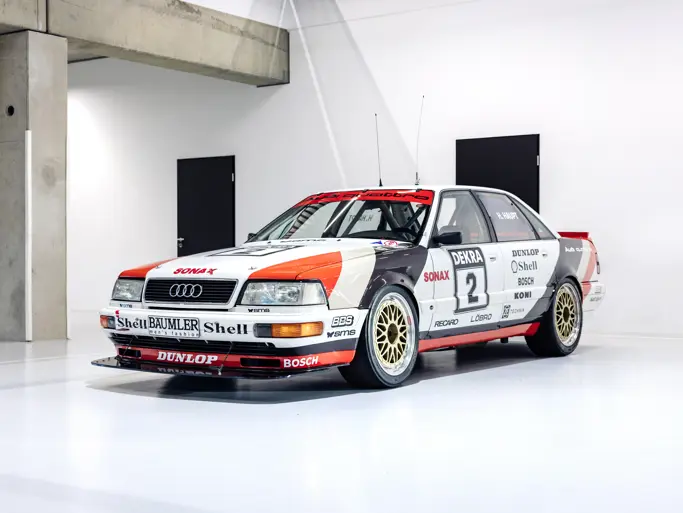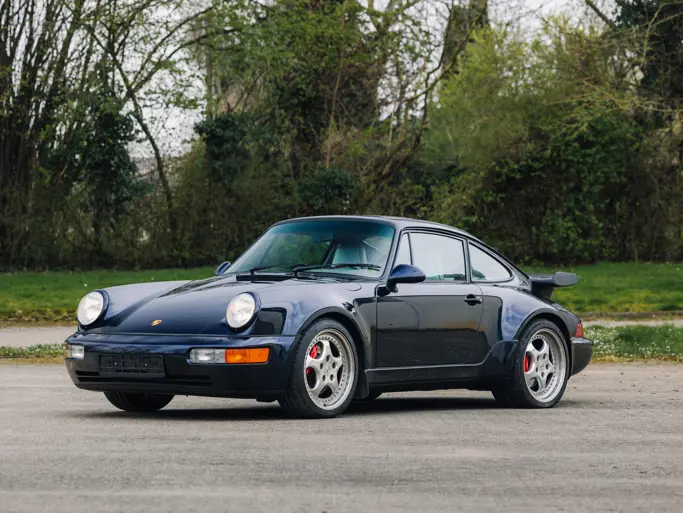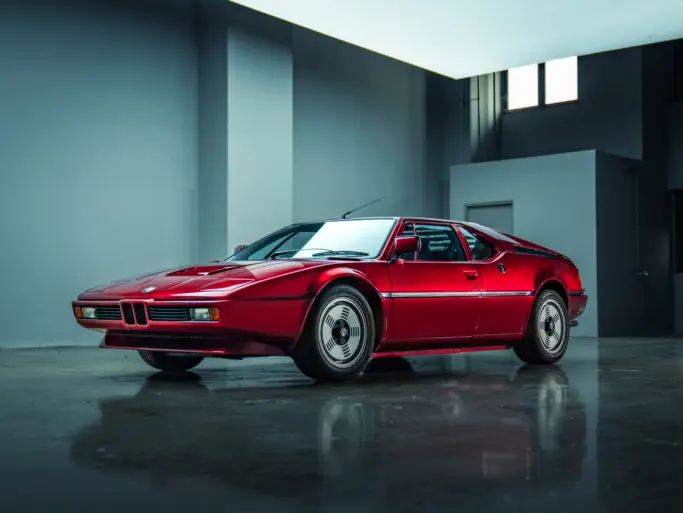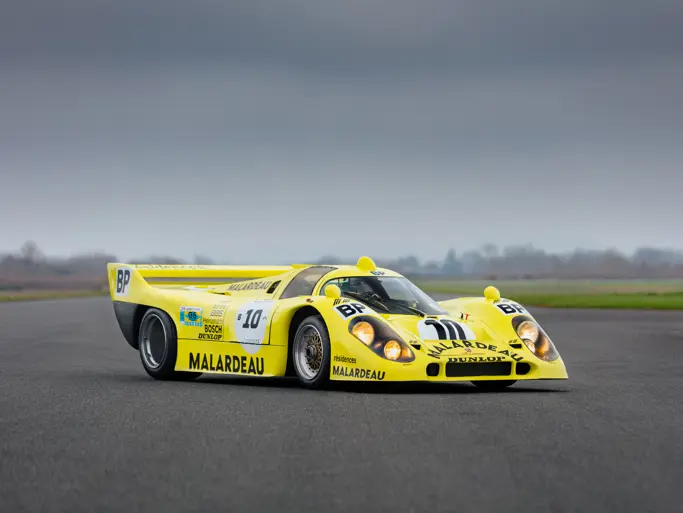Monterey 2012
1987 Porsche 962 IMSA Camel GT Racing Car
{{lr.item.text}}
$1,200,000 - $1,600,000 USD | Not Sold
 | Monterey, California
| Monterey, California
{{internetCurrentBid}}
{{internetTimeLeft}}

Est. 700 bhp, single turbo, air-cooled 3.2-liter engine, five-speed manual gearbox, independent front suspension with wishbones and front and rear coil springs, four-wheel ventilated disc brakes, and rear-wheel drive with aluminum monocoque.
Please note that this vehicle will be sold on a Bill of Sale only.
• 1988 IMSA Camel GT Manufacturer’s Championship winner
• 1988 Porsche Cup North America winning car
• In excellent, fully and properly restored, regularly maintained condition
The Porsche 962
The saga of the Porsche 962 started out innocently enough, as Porsche wanted to adapt its 956 sports-racing prototype to racing in North America. Porsche’s new monocoque chassis layout and ground effect design had already conclusively demonstrated their effectiveness on the all-conquering 956 sports-racing prototypes, but the 962 took the model’s dominance to an entirely new level. When the 956 was developed in late-1981, Porsche’s intention was to campaign the car in both the World Sportscar Championship and the North American IMSA GTP Championship. However, IMSA GTP regulations differed from FISA’s Group C rules package, and as such, the 956 was banned from the American series primarily on the grounds of safety.
To make the 956 eligible under the IMSA regulations, Porsche extended the car’s wheelbase 2.4-inches at the front to make room for a pedal box, which would place the driver’s feet behind the theoretical front axle line. Additionally, a steel roll cage was integrated into the revised aluminum chassis. The new car was fitted with an air-cooled, 2.8-liter flat six-cylinder, which used a single KKK K36 turbocharger, as opposed to the twin K27s of the Group C 956.
The 962 made its IMSA debut at the 1984 Daytona 24 Hour and was immediately quick, qualifying on the pole. The following year, Porsche began to campaign the 962 in the World Sportscar Championship. Designating the Group C model the 962C, the factory and customer cars used four-valve, twin-turbo engines, in contrast to their IMSA GTP counterparts.
Almost immediately, customer teams took it upon themselves to further develop the 962. One of the more pronounced shortcomings of the standard 962 was the lack of stiffness in its aluminum chassis, which led some teams to design new chassis and simply purchase components from Porsche to complete their cars.
Among the most popular privately-built 962s were those from Kremer Racing, John Thompson for Brun Motorsport and Obermaier Racing, Nigel Stroud for Richard Lloyd Racing’s GTi Engineering, Vern Schuppan, Jim Chapman, FABCAR, and Holbert Racing.
The 962 engine packages were similarly developed over the years. Single-turbo, twin-turbo, air-cooled, water-cooled, air/air intercooled, air/water intercooled, two-valve, four-valve, 2.6-liter, 2.8-liter, 3.0-liter, and 3.2-liter engines, in various combinations, all appeared in the 962.
However, it was the results that spoke most loudly when it came to the 962 in motorsports, both on the continent and abroad. In North America, the 962 won the IMSA Camel GT Championship every year from 1985 to 1988. In Europe and Asia, the 962C won the World Sportscar Championship in both 1985 and 1986, the Interserie Championship from 1987 to 1992, all four years of the Supercup Series (1986 to 1989), and the All Japan Sports Prototype Championship from 1985 until 1989. In addition, the 962C won the 24 Hours of Le Mans in 1986, 1987, and 1994. With a competitive career lasting nearly a decade, the Porsche 962 has justifiably left its mark on endurance racing and remains one of the most successful sports racing prototypes in history.
Chassis no. 962 DR1(RLR 202)
For three years, from 1985 through 1987, the Porsche 962 dominated sports car racing in North America, winning three GTP Manufacturer’s Championships in a row. In 1988, however, rule changes quickly loosened Porsche’s stranglehold on the IMSA Camel GT Championship. New restrictor-plate rules greatly reduced the effectiveness of the 962’s turbocharged motor, as the limitations of its mechanically-controlled waste gates became painfully pronounced. Consequently, the 1988 season was quickly dominated by another turbocharged car, the
Electramotive Nissan ZX-T, which featured an electronically-controlled waste gate. With no development support from the Porsche factory, it was left to the ingenuity of the customer teams to defend the Manufacturer’s Championship.
Rob Dyson knew if he wanted to win a fourth consecutive North American Porsche Cup for Dyson Racing, he would need something completely new for the 1988 season. Dyson turned to Silverstone-based Richard Lloyd Racing/GTi Engineering for a solution. RLR’s re-engineered, Nigel Stroud-designed GTi 962 chassis were renowned throughout Europe for their superior aluminum composite honeycomb construction and state-of-the-art suspension and brake design. Dyson purchased RLR 202, the fifth of six GTi 962 chassis constructed, and commissioned FABCAR to further develop the car for IMSA sprint events. Upon completion, RLR 202 was renamed DR1 and subsequently sent out hunting.
When DR1 appeared at West Palm Beach for the fifth round of the Championship, it was the quickest of the 962s, finishing Third Overall. Throughout the remainder of the 1988 season, DR1 would take two more podiums, including Porsche’s final win of the season at San Antonio, where it broke Nissan’s eight race winning streak. As the points-leading 962 of the 1988 season, DR1 is largely credited with clinching Porsche’s final IMSA Manufacturer’s Championship, beating Nissan by one point. In addition, DR1 secured Dyson Racing’s fourth North American Porsche Cup and carried Price Cobb and James Weaver to Third and Fourth in the Driver’s Championship, behind Nissan’s Geoff Brabham and Jaguar’s John Nielsen. At the end of the 1988 season, Dyson retired DR1. The car was later campaigned in selected IMSA events during the 1990 and 1991 seasons. Some time later, DR1 was acquired by noted collector George Stauffer, who subsequently sold it to enthusiast and vintage racer Larry Wilson.
While owned by Mr. Wilson, DR1 was entered in several exhibition events, including Rennsport Reunion 11 (2004) and the Concours de Graylyn Car Festival (2006). The car was then sold to Rolex Sports Car Series driver Steve Goldin, who entered the car at Rennsport Reunion III (2007). DR1 has since been purchased by its current owner, who has continued to keep up its maintenance and care.
Since being retired from professional racing in 1991, DR1 has had no traumatic experiences on or off the track. More importantly, during its thirteen race career in the hands of, among others, Price Cobb, Rob Dyson, John Paul Jr., James Weaver, and Bill Adam, it never suffered any significant or irreparable damage. DR1 still retains its original RLR/GTi chassis.
Restored some years ago by Porsche specialist Paul Willison, DR1 has since been maintained by both Mr. Willison and specialists at SpeedWerks, in North Carolina. DR1 has recently undergone a thorough race preparation, at which time its single-turbo, air-cooled, 3.2-liter motor had its bearing seals, rings, and waste gates renewed, as well as having all four corners overhauled and a new fuel bag installed. As the car was constructed in 1988, it is eligible for all foreign and domestic IMSA GTP/Group C vintage events without restriction.
While the provenance of DR1 is exceptional, perhaps what is most significant about the car is that it is the last IMSA Championship winning Porsche 962. As such, it is truly a noteworthy example of the marque and worthy of placement in any important collection of Porsches or sports racing cars and would remain today a fearsome competitor in historic sports prototype racing.
962 DR1 Competition History
1988 IMSA Camel GT Championship
West Palm Beach – Price Cobb / James Weaver – 3rd
Lime Rock – Price Cobb / James Weaver – 6th
Mid-Ohio – Price Cobb / James Weaver – 4th
Watkins Glen – Price Cobb / James Weaver – DNF (Suspension)
Road America – Price Cobb / James Weaver – 3rd
Portland – Price Cobb / James Weaver – 5th
Sears Point – Price Cobb / James Weaver – 4th
San Antonio – Price Cobb / James Weaver – 1st
Columbus – Rob Dyson / Scott Pruett – 18th
Del Mar – Rob Dyson – DNF (Retired)
1990 IMSA Camel GT Championship
Daytona 24 Hour – Bill Adam / Richard Laporte – DNF (Engine)
Miami – Bill Adam / David Seabroke – 7th
Sebring 12 Hour – Bill Adam / Scott Harrington – DNF (Accident)
1991 IMSA Camel GT Championship
Sebring 12 Hour – James Weaver / John Paul Jr. – DNF (Suspension)

